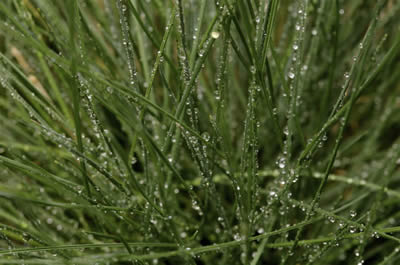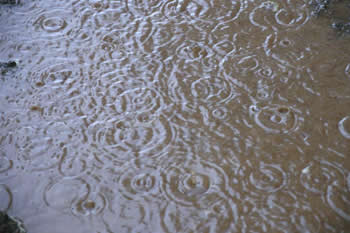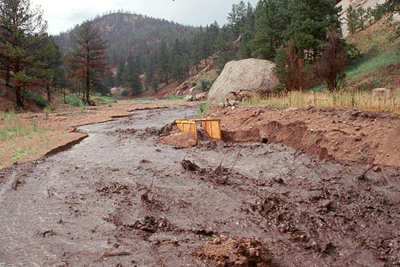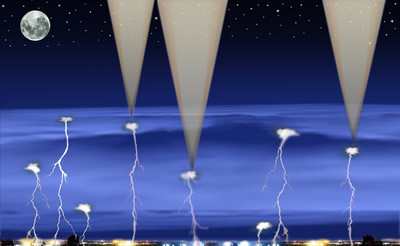This cumulonimbus cloud has the characteristic anvil-shaped top.
Click on image for full size
Courtesy of UCAR Digital Image Library
Thunderstorms
Thunderstorms are one of the most thrilling and dangerous types of weather phenomena. Over 40,000 thunderstorms occur throughout the world each day.
Thunderstorms form when very warm, moist air rises into cold air. As this humid air rises, water vapor condenses, forming huge cumulonimbus clouds.
There are two main types of thunderstorms: ordinary and severe. Ordinary thunderstorms are the common summer storm and usually last about one hour. The precipitation associated with these storms includes rain and occasionally small hail. With ordinary thunderstorms, cumulonimbus clouds can grow up to 12 kilometers high.
Severe thunderstorms are very dangerous. They are capable of producing baseball-sized hail, strong winds, intense rain, flash floods, and tornadoes. Severe thunderstorms can last several hours and can grow 18 kilometers high. Several phenomena are associated with severe thunderstorms, including gust fronts, microbursts, supercell thunderstorms, and the squall lines.
You might also be interested in:

Condensation is the process by which water changes its state from a vapor or gas to a liquid. Condensation is responsible for the formation of clouds. Common examples of condensation are: dew forming on
...more
Cumulonimbus (weather symbol - Cb) clouds belong to the Clouds with Vertical Growth group. They are generally known as thunderstorm clouds. A cumulonimbus cloud can grow to such heights that it actually
...more
Rain is precipitation that falls to the Earth in drops of 5mm or greater in diameter according to the US National Weather Service. Virga is rain that evaporates before reaching the ground. Raindrops form
...more
A supercell thunderstorm is a huge rotating thunderstorm. It can last for several hours as a single entity. These storms are the most likely to produce long-lasting tornadoes and baseball-sized hail. Tornadoes
...more
Wind is moving air. Warm air rises, and cool air comes in to take its place. This movement creates different pressures in the atmosphere which creates the winds around the globe. Since the Earth spins,
...more
People living near vulnerable creeks and rivers along Colorado's Front Range may soon get advance notice of potentially deadly floods, thanks to a new forecasting system being tested this summer by the
...more
Firefly, it's called, this new small satellite mission sponsored by the National Science Foundation (NSF). It's designed to help solve the mystery of the most powerful natural particle accelerator in Earth's
...more














